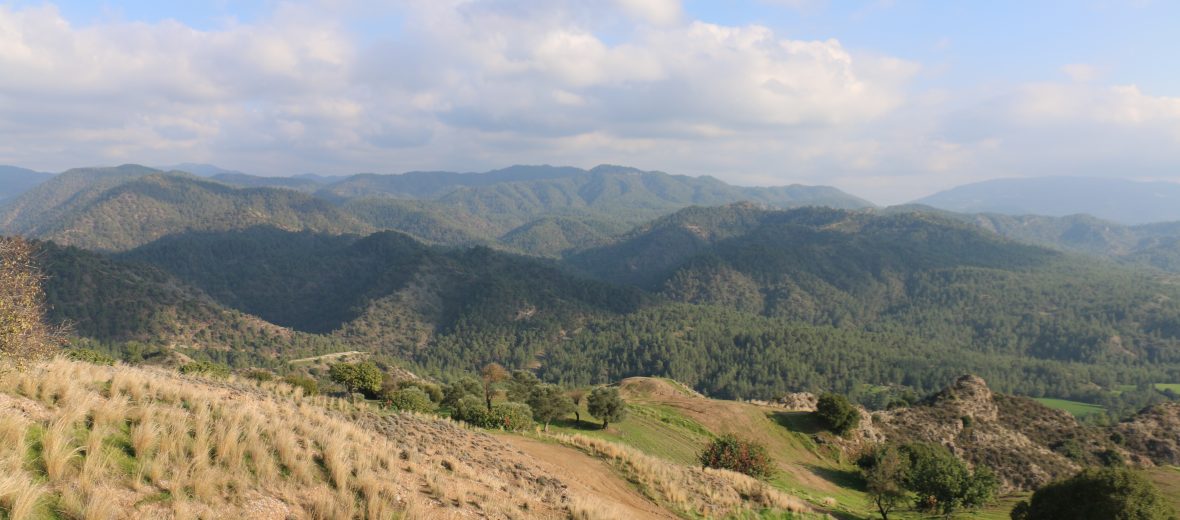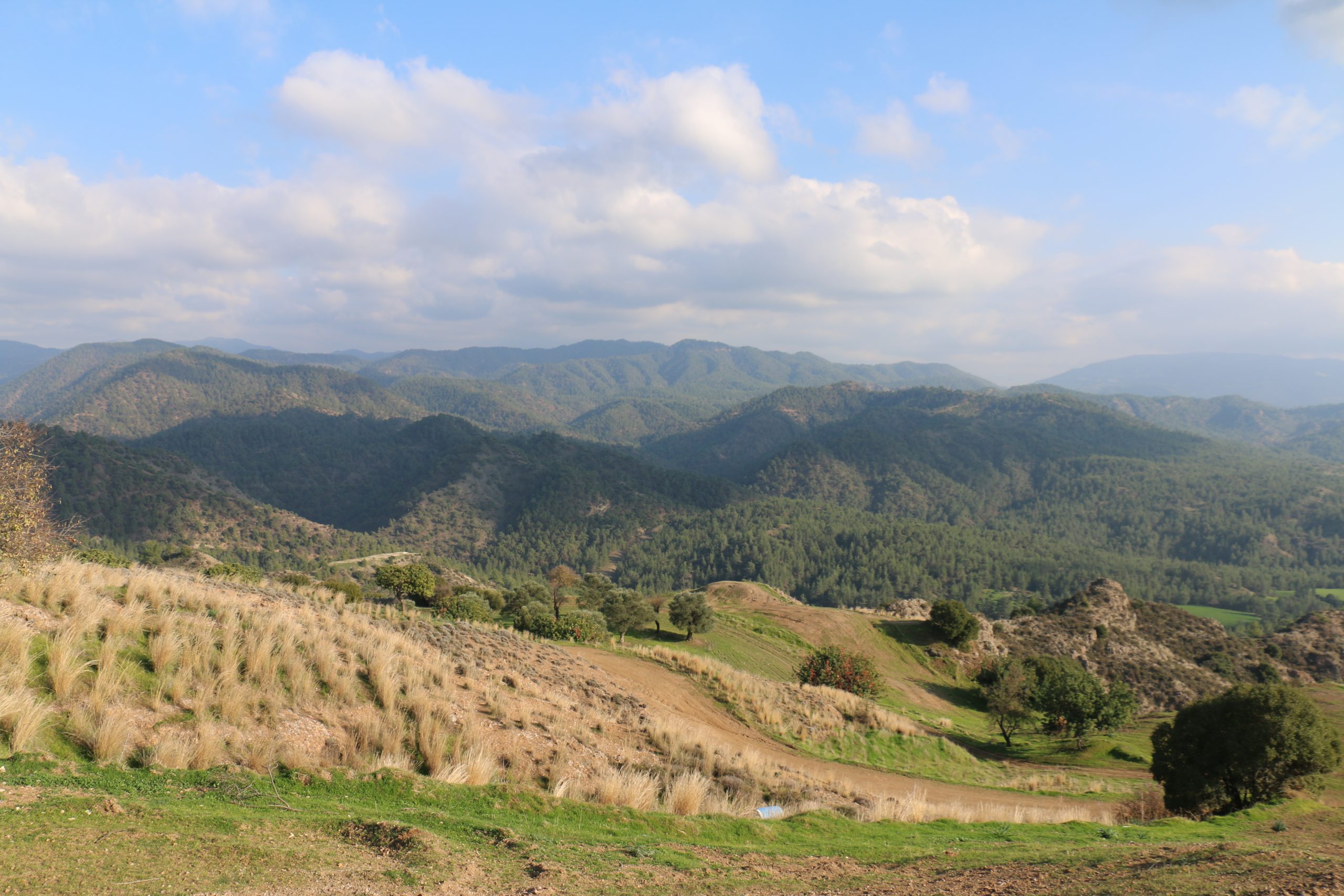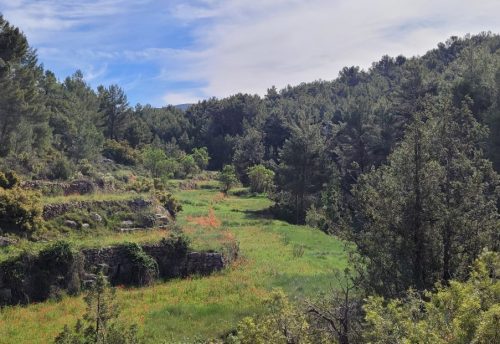
A blog post by Judith Kirschner
Cyprus has to date been spared from tragic mass-casualty wildfires, but social, environmental, and climatic change will make wildfire management more challenging in the future. Five themes from a review of high-level wildfire reports present opportunities for state agencies, decision-makers and the public alike to improve wildfire preparedness.
Setting the scene: wildfires in Cyprus
Is there a vision for Cyprus to be better prepared for wildfire? Wildfire is a phenomenon that is now recognised as inevitable in many similar places, meaning that the question is not if it will burn, but rather when and how. Coexisting with wildfire therefore requires envisioning and preparing so that a wildfire, when it burns, will not cause death and destruction.
Cyprus is loved for its magnificent beaches, forested mountains, a fertile countryside, and its generous hospitality. It is also well-known for its sunny weather, with daily temperatures commonly exceeding 30 degrees Celsius from April to September. The drought tolerant vegetation types that can be found in this climate zone (maquis, garrigue, coniferous species) are highly flammable, and wildfires frequently make the news during the long summer months.
Despite some tragic fatalities, Cyprus has been spared from the traumatic mass-casualty events that have occurred in many other places in recent years, like Chile (2024), Hawaii (2023), Greece (2018), California (2018), and Portugal (2017). At the same time, ongoing climatic, environmental, and societal changes suggest that future conditions will further complicate wildfire management. Does this mean that the country can be considered well-equipped and ready for increasingly fire-prone conditions?
Following discourses in the media and policy-making, the answer is no. Two topics draw most of the attention: the need for investments into firefighting resources, and the need for reform of the legal framework to apply fines for illegal burning (Example 1, 2, 3, 4, 5, 6). These two topics are indeed important: during extreme fire-weather conditions (hot, dry, windy days), resources are required and everyone needs to take utmost care to avoid intentional or accidental ignitions. But will addressing these issues be sufficient to tackle the growing wildfire challenge?
Firefighting and legislation: adequate solution or dangerous trap?
In early 2024, the legal framework was tightened with high penalties for any activity potentially causing a forest fire, but a residual risk remains for ignitions caused by road accidents or electricity shortcuts. Investments into firefighting capacities and aerial means are necessary and seem to indicate political action and readiness up until the level of the EU. However, some of the most tragic fire events of modern times happened during a period with the historically best developed resources and technologies. Lessons learned the hard way in countries including Australia, the US, Portugal, Spain, Chile and Canada indicate that relying on firefighting as the solution to catastrophic wildfires is a dangerous trap for several reasons.
On a day with the right (or rather: with the wrong) weather conditions, an ignition can transform into a fast-moving fire front within minutes. Emergency managers and residents are then given little time to make informed decisions on how to react. Simultaneous incidents, difficult terrain, dense smoke, dangerous flame height, and lack of visibility at night, can delay immediate attack and restrict effective suppression. When early suppression fails, an ignition can grow into a catastrophic fire, and there simply isn’t enough resources available to protect every single house and home threatened by a fire front.
Wildfires that typically develop during extreme fire weather have the potential to become intense, fast-moving and devastating. They commonly exceed suppression capacities, and the only way to contain them is when there is either no fuel left to burn, or when weather conditions change. In the words of Tasmanian Fire Chief Mike Brown, “The way you fight a fire like this one, these days, is pretty much: you don’t”.
All these conditions have recently been recorded in Cyprus. A large incident near Stavros tis Psokkas in 2023 was caused by uninsulated electric wires, in a remote area challenging response teams. In 2022 in Kantara, residents, volunteers, and state agencies were confronted with an out-of-control fire that ultimately was extinguished by rain after four days. The Arakapas fire in 2021 went unchecked after firefighting crews were delayed due to a simultaneous incident, leading to an unprecedented area burned of 5’000 hectares in less than 24 hours, killing four persons in a failed attempt to evacuate.
If legislation and firefighting resources are important but not everything, then what could a vision for a better prepared Cyprus look like?
Landscape after the fire incident near Alassa in August 2023, the cultivated agricultural area in the centre of the photo remained unburned.
Governing wildfire: five opportunities
To answer this question and within the context of my PhD research, I had the opportunity to work with collaborators in Cyprus and the US. We conducted a targeted review of recently published high-level wildfire reports and identified five key themes that are characteristic for the current wildfire challenge. Each theme presents an opportunity for wildfire governance as summarised below.
1. The wildfire paradox: embracing intentional burning with socio-ecological benefits
The wildfire paradox (or firefighting trap) revolves around a simple fact: in fire-evolved ecosystems, the exclusion of all fire leads to an excessive growth of flammable vegetation, thereby fostering conditions for higher intensity fires in the long run. This can be addressed with the careful, intentional application of low-intensity fire under specific conditions (usually in winter, outside of the fire season) to achieve defined purposes. This type of burning is a contentious method in many places, because social and ecological benefits need to be carefully balanced with potential risks. How exactly a desirable burning regime for Cyprus could look like requires further research and a conversation between all affected stakeholders.
2. The limits of suppression: shifting landscape management to anticipate future conditions
Wildfire conditions that exceed the capacities of ground and aerial suppression are increasingly recorded in Cyprus and other places, meaning that the emergency response system won’t be able to respond to the needs everywhere. For this reason, governance systems are now aiming not only for adapting to changing conditions, but they anticipate conditions of upcoming decades in management decisions. For example, rather than trying to preserve a landscape that evolved under different climatic and social conditions at all costs, a thriving environment by mid-to-end of this century might require planting different species today.
3. Impacted communities: empowering local coping capacity
Lessons from other fire-prone regions abroad demonstrate the vital importance of empowering local communities with information and skills that will increase their practical and mental preparedness for wildfires. Local communities are the experts when it comes to knowing their locality, capacities, and needs. To make a house or built structure more defensible, it needs to have a defensible space. This is currently advised, but not legally mandatory and in rural areas widely ignored. Residents need to know how and when to act in an emergency to avoid making potentially fatal decisions that could also put civil protection personnel at risk. District administrators and municipal representatives need to avoid last-minute decisions by engaging in preparedness conversations on how and where to place limited resources before disaster strikes.
Pinus brutia stands in Paphos forest, with an open cultural landscape in the foreground.
4. Socially constructed risk: reconceptualising wildfire management
Wildfire risk is more than a technical calculation. Demographic change, rural land abandonment and the expansion of urban development into vegetated areas are systemic factors contributing to disastrous wildfire. Wildfires burn less intensely and spread less quickly in diverse, mosaic rural landscapes, such as those unique to Cyprus. Valuing and supporting rural areas can therefore be as important for the management of wildfires as firefighting competencies. Vulnerability is often created by systemic structures rather than by economic income or individual inadequacies. Reconceptualising wildfire management therefore requires thinking of fire risk creation in broader terms, for example by identifying and protecting vulnerable groups and infrastructure before, during, and after a wildfire.
5. Wildfire complexities are embedded in different systems: enabling collective action
Wildfires do not stop at boundaries such as Cyprus’ Green Line. Yet, assistance during large wildfire incidents often arrives from neighbouring countries rather than the imminent vicinity – despite the shared goal of safeguarding society and landscapes from wildfire impact. NGOs, volunteer groups and collaborative research projects (example 1, 2, 3) can play an active role in engaging the public and fostering knowledge exchange, while taking steps towards collectively addressing the island-wide threat of wildfire. This includes the coordination of volunteers by state agencies, and their participation in training opportunities and exchanges abroad.
Conclusions
In a climatically, environmentally, and culturally altered era, Cyprus needs to proactively move towards a wildfire risk management approach that increases coping capacities of diverse social, political, and environmental entities. The five themes highlighted in this article offer a starting point for building wildfire resilient communities and landscapes. Wildfires are a highly complex process, and the proposed solutions do not provide all the answers. Rather, they contribute to existing collective efforts and the ongoing conversation about a vision for a wildfire-prepared Cyprus.
Important – follow up research
Have you been impacted by wildfire, or do you live/work in an at-risk area in Cyprus? If so, you are invited to anonymously participate in a 15-min survey that focuses on community wildfire resilience (closes August 31st, 2024): Survey link in English
Acknowledgments
The PyroLife-funded research for this article was collaboratively conducted with Dr. George Boustras, Dr. Toddi Steelman, Dr. Iris Charalambidou, Dr. Salih Gucel, Petros Petrou and Kostakis Papageorgiou. I would like to acknowledge the time and the many insightful conversations with employees of the Cyprus Department of Forests in August 2023, with the kind permission of the Department’s Director Charalambos Alexandrou. Dr. Christine Eriksen provided constructive feedback on writing this summary.





Leave a Reply